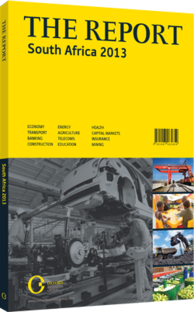Working from within: Despite low income levels, domestic tourism shows great potential for growth
With core source markets in Europe experiencing weak growth, tourism figures remain fragile. Domestic tourism, which accounts for 72.4% of total trips or visits, could be a boon to the sector given global circumstances, but this segment has also been stifled to some extent in recent times. Indeed, a struggling local economy and income pressure are hampering attempts to maximise the potential of domestic tourism.
In the third quarter of 2012, the number of domestic trips in South Africa fell by 12% to 6.1m, compared to the same period of 2011, according to South Africa Tourism. The fall in volume was accompanied by a contraction in revenue. While the average spend per domestic trip rose from R760 ($93) to R830 ($101) in the third quarter of 2012, the overall revenue from domestic trips was down 6% to R4.9bn ($597m). Similarly, while the average length of stay increased to 4.3 nights from 4 nights, the total domestic bed nights decreased by 3.6% to 26.5m, according to South Africa Tourism.
Reduced Demand
It would appear that domestic tourists are beginning to feel the squeeze. According to South Africa Tourism, holiday trips only accounted for 6% of all domestic trips in the third quarter of 2012, down from 15% in the previous year. Visiting family and relatives remained the major reason for travelling, accounting for 78% of all trips in the third quarter of 2012. While business trips increased from 4% to 7% of all trips in the quarter, it would appear that the fragile economy has been having a negative impact on domestic tourism. According to a survey taken by South Africa Tourism for its quarterly domestic tourism indicators, 31% of respondents said they had not taken a trip in the third quarter of 2012 because they could not afford to travel, while a further 15% cited unemployment.
Revenue Disparity
While there were 6.1m domestic trips in the third quarter of 2012, compared to 2.3m international tourism arrivals, the domestic market has always paled in comparison to overseas visitors in terms of income generation. The total direct domestic spend in the same quarter fell to R4.9bn ($597m) against R19bn ($2.3bn) for the foreign direct spend, an increase of 3.1% on the same period of 2011.
To some extent, the domestic market is limited by local income levels. These have certainly improved in recent years, with gross national income per capita increasing in real terms from R27,521 ($3354) in 1993 to R38,734 ($4721) in 2011, according to the South African Reserve Bank (SARB). The Living Standard Measures (LSM) of the South African Advertising Research Foundation (SAARF) illustrates growing income levels within the country. The LSM, which breaks down the population into income brackets with 1 being the lowest (earning R1439 [$175] per month or less) and 10 being the highest (earning R30,323 [$3696] or more), shows that the highest growth is coming in the middle-income brackets. LSM 6, with a monthly income estimate of R6398 ($779), was the most populous cohort in 2011, accounting for 7.1m adults. This was followed by LSM 5 (5.8m adults) and LSM 4 (4.5m adults).
This bodes well for the hospitality industry. However, with the average foreign spend per tourist for air markets reaching R13,700 ($1670) – more than two months’ income for a middle-class South African – the domestic market is likely to remain less lucrative for some time to come. Yet the Department of Tourism is keen to emphasise the potential of this segment, suggesting that even lower-income individuals demand travel and trips within all strata of the domestic market.
Pooling Resources
The department is currently undertaking research on the potential of stokvels for the local hospitality industry. These informal community savings organisations pool village or community personal income for various purposes, including burials and investment, and sit on an estimated spending power of R44bn ($5.36bn). The Department of Tourism believes there is potential for operators and accommodation owners, particularly in the self-catering segment, to target members of these organisations. As such, the domestic market may require further segmentation, but there is robust potential for the coming years.
You have reached the limit of premium articles you can view for free.
Choose from the options below to purchase print or digital editions of our Reports. You can also purchase a website subscription giving you unlimited access to all of our Reports online for 12 months.
If you have already purchased this Report or have a website subscription, please login to continue.

